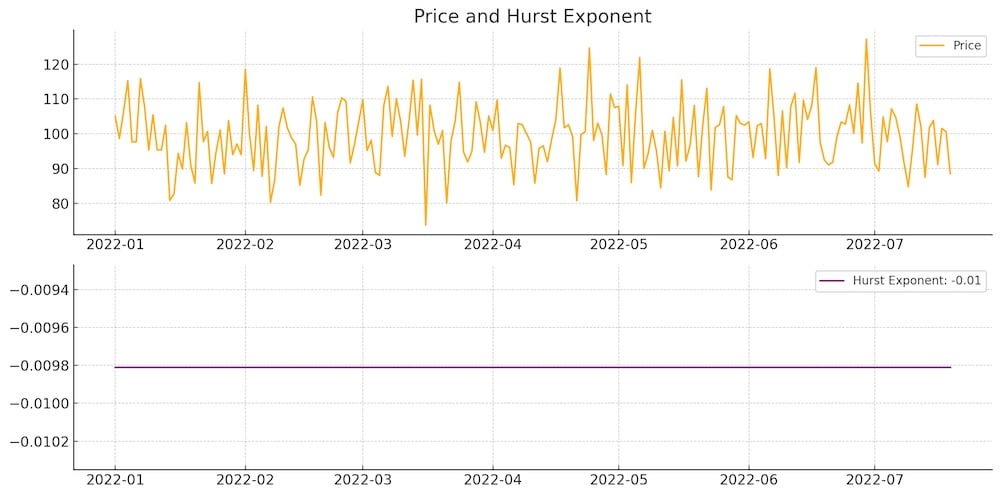My oh my, tactical asset allocation, the art of fine-tuning your investment portfolio to seize market opportunities and navigate the ever-changing landscape of finance! Welcome, my fellow financial adventurers, as we embark on a journey into the realm of tactical asset allocation and uncover its profound significance in portfolio management.
But what exactly is tactical asset allocation, you may ask? Well, tactical asset allocation is a dynamic strategy that goes beyond the traditional buy-and-hold approach. It involves actively adjusting your portfolio based on market conditions and emerging opportunities. Think of it as the skillful dance of a master conductor, orchestrating the movements of your investments to maximize returns.
Now, let’s explore why tactical asset allocation is such a game-changer. Picture this: the market, like a vast and ever-shifting sea, presents a multitude of opportunities and challenges. With tactical asset allocation, you have the power to navigate these waters with finesse, adjusting your portfolio to take advantage of market upsides while mitigating potential downsides. It’s like having a compass that guides you toward the hidden treasures of the financial world.

But the benefits don’t stop there, my friend. By fine-tuning your portfolio for market opportunities, you enhance the potential for higher returns. Instead of passively holding onto investments through market cycles, tactical asset allocation allows you to actively respond to changing dynamics. It’s like being a skilled surfer, riding the waves of market movements to capture those sweet spots of growth.
Imagine this: the market presents a unique opportunity, a sector poised for significant expansion. With tactical asset allocation, you have the flexibility to allocate a larger portion of your portfolio to that sector, capitalizing on its growth potential. Conversely, if there are signs of impending turbulence, tactical asset allocation empowers you to reduce exposure and seek safer havens. It’s like having a well-equipped toolbox, enabling you to adapt to different market conditions and make strategic moves.
But, my fellow adventurers, let us not forget the importance of thorough research and analysis. Tactical asset allocation requires a keen eye, keeping a finger on the pulse of the market. It involves studying market indicators, tracking economic trends, and understanding the forces that drive asset price movements. It’s like a detective piecing together clues to uncover hidden opportunities and make informed decisions.
In this vast sea of possibilities, tactical asset allocation allows you to be proactive rather than reactive. It’s about staying one step ahead, anticipating market shifts, and adjusting your sails accordingly. By taking a dynamic approach, you are better positioned to weather storms, seize opportunities, and achieve your financial goals.
So, join me as we delve deeper into the realm of tactical asset allocation. Let us unravel the strategies, explore real-world examples, and equip ourselves with the knowledge and insights needed to fine-tune our portfolios for market opportunities. Together, we shall embark on a thrilling journey of discovery, unlocking the potential for higher returns and mastering the art of navigating the tides of finance with grace and precision.

Understanding Tactical Asset Allocation
Let us delve into the essence of tactical asset allocation, my fellow financial explorers. Tactical asset allocation is a dynamic investment strategy that involves adjusting the allocation of assets within a portfolio based on short-term market conditions and opportunities. It is the art of seizing the moment and capitalizing on market inefficiencies.

At its core, tactical asset allocation operates on the belief that markets are not always perfectly efficient and that short-term mispricing can occur. By actively managing asset allocation, investors aim to exploit these inefficiencies to generate superior returns. It’s like being a cunning opportunist, scouting the market for undervalued gems and reallocating resources accordingly.
Now, let’s uncover the key principles that guide tactical asset allocation. Firstly, it emphasizes flexibility and adaptability. Unlike strategic asset allocation, which typically follows a predetermined long-term plan, tactical allocation embraces the ever-changing nature of markets. It allows for adjustments in response to market shifts and emerging opportunities.
Secondly, tactical asset allocation focuses on short-term considerations, analyzing market conditions and economic indicators to make informed decisions. It’s about capitalizing on the current market sentiment and trends rather than solely relying on long-term projections. By staying nimble and responsive, investors aim to optimize their portfolio performance.

Differentiating Tactical Allocation from Strategic and Dynamic Allocation Strategies
Now, you may wonder how tactical asset allocation differs from other allocation strategies. Let’s shed some light on this intriguing distinction, my curious comrades.
Strategic asset allocation, the stalwart of long-term planning, aims to create a balanced portfolio based on the investor’s risk tolerance and financial goals. It typically involves setting fixed target allocations to different asset classes and maintaining those allocations over time. It’s like constructing a solid foundation for your investment journey and sticking to the plan through thick and thin.
On the other hand, dynamic asset allocation shares some similarities with tactical allocation. It also involves making adjustments to asset allocations based on market conditions. However, the key difference lies in the frequency and magnitude of adjustments. Dynamic allocation typically involves more moderate and less frequent changes, often driven by longer-term trends or economic cycles.
In contrast, tactical asset allocation takes a more active and opportunistic approach. It aims to exploit short-term market inefficiencies and capitalize on immediate opportunities. Tactical allocators may make more frequent adjustments, sometimes even deviating significantly from their long-term strategic targets. It’s like a daring tightrope walker, skillfully navigating the market’s twists and turns in search of immediate gains.
Exploring the Role of Market Analysis and Forecasting in Tactical Asset Allocation
The art of market analysis and forecasting, the compasses that guide tactical asset allocation decisions. Let us explore their significance and the role they play in this dynamic strategy.
Market analysis involves examining various indicators, charts, and economic data to understand the current state of the market. It’s like studying the intricate patterns woven into the fabric of finance. By analyzing market trends, investor sentiment, and economic factors, tactical allocators gain insights into potential opportunities and risks.
Forecasting, on the other hand, attempts to predict future market movements based on the analysis of historical data and trends. It’s like gazing into a crystal ball, seeking glimpses of what lies ahead. Forecasting techniques, such as technical analysis or fundamental analysis, help tactical allocators identify potential market shifts and adjust their asset allocations accordingly.
However, it is important to recognize the inherent limitations of market analysis and forecasting. Markets are influenced by numerous factors, including geopolitical events, economic surprises, and unforeseen developments. While analysis and forecasting provide valuable insights, they are not infallible crystal balls. Tactical allocators must remain vigilant and adapt to changing conditions.
In the world of tactical asset allocation, market analysis and forecasting serve as valuable tools, but they are not the sole determinants of decision-making. Tactical allocators must also consider their own risk tolerance, investment objectives, and the broader economic landscape.
It’s important to note that tactical asset allocation is not about attempting to time the market perfectly or consistently outperform it. Rather, it is about taking advantage of short-term market inefficiencies and adjusting asset allocations accordingly. By staying informed, analyzing market trends, and utilizing forecasting techniques, tactical allocators aim to position their portfolios to capture potential opportunities while managing risks.
Tactical asset allocation also requires discipline and a systematic approach. It’s not a haphazard reaction to every market blip or a constant churn of investments. Instead, it involves a thoughtful and deliberate assessment of market conditions and a strategic reallocation of assets to take advantage of favorable circumstances.
As we navigate the realm of tactical asset allocation, let us remember that market analysis and forecasting are valuable tools, but they are not foolproof. They provide a lens through which we can understand the market, but they do not guarantee accurate predictions or absolute certainty. The key is to combine these insights with prudent risk management, diversification, and a long-term perspective.
source: The Meb Faber Show on YouTube

Tactical Asset Allocation and its Key Principles
Tactical asset allocation can be best described as a strategy that involves making strategic adjustments to asset allocations within a portfolio based on short-term market conditions and opportunities. It is like an art form, where the savvy investor becomes a skilled conductor, orchestrating the allocation of their investments to capitalize on ever-changing market dynamics.
At its core, tactical asset allocation is rooted in the belief that markets are not always fully efficient and that short-term mispricings and market trends can present opportunities for superior returns. This strategy allows investors to actively manage their portfolio by tactically reallocating their assets, taking advantage of these market inefficiencies and seeking to outperform traditional, passive investment approaches.
Now, let us explore the key principles that guide tactical asset allocation, unveiling the secret sauce behind its success. Firstly, flexibility and adaptability are paramount. Unlike strategic asset allocation, which follows a fixed long-term plan, tactical allocation embraces the dynamic nature of markets and allows for timely adjustments in response to changing market conditions. It is akin to the graceful dance of a nimble acrobat, gracefully adjusting their moves to align with the shifting rhythm of the market.
Secondly, tactical asset allocation is driven by short-term considerations. It involves analyzing current market conditions, economic indicators, and investor sentiment to make informed decisions regarding asset allocation. Instead of relying solely on long-term projections, tactical allocators focus on the immediate opportunities presented by market trends. It’s like a skilled surfer, riding the waves of market movements to catch the perfect wave of returns.
Differentiating Tactical Allocation from Strategic and Dynamic Allocation Strategies
Ah, the subtle nuances that set tactical asset allocation apart from its siblings – strategic and dynamic allocation strategies. Let us unravel the distinctions that define each strategy.
Strategic asset allocation, the cornerstone of long-term planning, aims to create a well-balanced portfolio based on an investor’s risk tolerance and long-term financial goals. It involves setting predetermined target allocations to different asset classes and maintaining those allocations over time. It’s like constructing a sturdy foundation for your investment journey and staying the course through market fluctuations.
Dynamic asset allocation, on the other hand, shares some similarities with tactical allocation. Both strategies involve making adjustments to asset allocations based on market conditions. However, the key differentiator lies in the frequency and magnitude of those adjustments. Dynamic allocation typically involves moderate and less frequent changes, often driven by longer-term trends or economic cycles.
Tactical asset allocation, true to its name, takes a more active and opportunistic approach. It aims to seize immediate opportunities and capitalize on short-term market inefficiencies. Tactical allocators may make more frequent and significant adjustments to their asset allocations, sometimes deviating significantly from their long-term strategic targets. It’s like a courageous adventurer, dynamically navigating the twists and turns of the market to conquer new heights.

Exploring the Role of Market Analysis and Forecasting in Tactical Asset Allocation
Shall we examine the interplay between market analysis, forecasting, and tactical asset allocation? Let us delve into the intriguing role they play in this dynamic strategy.
Market analysis is the compass that guides tactical allocators. It involves studying various indicators, market trends, economic data, and investor behavior to gain insights into current market conditions. By analyzing market fundamentals, sector performance, and market sentiment, tactical allocators can identify potential opportunities and risks.
Forecasting, on the other hand, attempts to predict future market movements based on analysis of historical data, technical indicators, and fundamental factors. It’s like peering through a crystal ball, seeking glimpses of what lies ahead. Forecasting techniques such as technical analysis, fundamental analysis, and quantitative models help tactical allocators make informed predictions about market trends and direction.
While market analysis and forecasting are valuable tools in tactical asset allocation, it is important to recognize their limitations. Markets are influenced by a multitude of factors, including geopolitical events, economic surprises, and unforeseen developments. Analysis and forecasts provide insights into potential opportunities, but they are not foolproof. Tactical allocators must approach them with caution and recognize that the future is inherently uncertain.
However, by combining market analysis and forecasting with their own expertise and experience, tactical allocators can make more informed decisions. They use these tools as guideposts to identify potential opportunities or risks, and then apply their judgment to adjust their asset allocations accordingly. It’s like a master chef, using a recipe as a starting point but adding their own flair and intuition to create a truly exceptional dish.
Moreover, the role of market analysis and forecasting goes beyond just identifying opportunities. They also serve as risk management tools. By monitoring market conditions and trends, tactical allocators can identify potential risks and take proactive measures to mitigate them. It’s like a vigilant guardian, keeping a watchful eye on the ever-changing landscape to protect the portfolio from potential pitfalls.
In the realm of tactical asset allocation, successful practitioners understand that market analysis and forecasting are valuable tools, but they are not the sole drivers of decision-making. They are used in conjunction with other considerations, such as risk tolerance, investment objectives, and market sentiment. Tactical allocators must also be prepared to adapt and adjust their strategies based on real-time information and changing market dynamics.

Identifying Market Opportunities
Let us embark on a quest to unravel the mysteries of market opportunities. In the realm of tactical asset allocation, the ability to identify these opportunities is akin to discovering hidden treasures. So, arm yourselves with knowledge as we delve into the various market indicators and signals that guide tactical allocators.
- Price and Volume Indicators: Price and volume are the lifeblood of the market. Tactical allocators pay close attention to price movements, trading volumes, and patterns. They look for signs of momentum, breakout patterns, or changes in trading activity that may indicate shifts in market sentiment or emerging trends.
- Moving Averages: Moving averages smooth out price fluctuations over a specific period, providing a clearer picture of the underlying trend. Tactical allocators use moving averages to identify potential entry or exit points, looking for crossovers or deviations from long-term trends as signals for adjusting their asset allocations.
- Relative Strength Index (RSI): The RSI is a momentum indicator that measures the speed and change of price movements. It helps tactical allocators assess whether an asset is overbought or oversold, signaling potential reversals or corrections in the market. By incorporating RSI into their analysis, tactical allocators can fine-tune their allocations based on the strength of the underlying assets.
- Market Breadth Indicators: Market breadth indicators, such as advance-decline ratios or the number of stocks hitting new highs or lows, provide insights into the overall health of the market. They help tactical allocators gauge the participation of different sectors or stocks in market movements, indicating the strength or weakness of a market trend.

Analyzing Market Trends, Sector Rotations, and Economic Factors for Identifying Opportunities
In the vast landscape of markets, opportunities abound for those who possess a discerning eye. Tactical asset allocators meticulously analyze market trends, sector rotations, and economic factors to identify these opportunities. Let’s explore how these factors come into play:
- Market Trends: Identifying and understanding market trends is crucial in tactical asset allocation. Tactical allocators study historical price movements, chart patterns, and technical indicators to identify potential uptrends, downtrends, or sideways markets. By aligning their asset allocations with prevailing trends, they aim to capture the momentum and potential returns.
- Sector Rotations: Markets are comprised of different sectors, each with its own characteristics and performance cycles. Tactical allocators keep a watchful eye on sector rotations, observing shifts in leadership from one sector to another. They analyze factors such as sector earnings, economic conditions, and investor sentiment to identify sectors that are poised for growth or those that may be facing headwinds. By adjusting their allocations to sectors showing strength or avoiding sectors exhibiting weakness, tactical allocators seek to capitalize on sector rotations.
- Economic Factors: The health of the economy and macroeconomic factors play a significant role in tactical asset allocation. Tactical allocators analyze economic indicators such as GDP growth, inflation rates, interest rates, and employment data. By understanding the broader economic landscape, they can make informed decisions about their asset allocations. For example, in an expanding economy, they may tilt their allocations towards cyclical sectors, while in a slowing economy, they may favor defensive sectors.
source: CFA Society Switzerland on YouTube

Evaluating the Importance of Staying Informed and Conducting Thorough Research
In the ever-evolving world of finance, staying informed and conducting thorough research are the bedrock of successful tactical asset allocation. Let us explore the reasons why these aspects are crucial:
- Timeliness and Relevance: Markets move swiftly, and opportunities can come and go in the blink of an eye. Tactical allocators must stay abreast of market news, economic developments, and industry-specific information. By staying informed, they can identify emerging trends, news catalysts, or policy changes that may impact asset prices. This timeliness and relevance of information enable tactical allocators to make well-informed decisions in a timely manner.
- Risk Assessment: Thorough research allows tactical allocators to assess the risks associated with potential market opportunities. By examining historical data, conducting fundamental analysis, and considering various risk factors, they can better understand the potential risks and rewards of different investment options. This helps them make informed decisions and allocate their assets in a way that aligns with their risk tolerance and investment objectives.
- Competitive Advantage: In the fast-paced world of finance, conducting thorough research can provide a competitive edge. By diving deep into company financials, industry trends, and market dynamics, tactical allocators can uncover valuable insights that others may overlook. This in-depth understanding allows them to identify hidden gems or potential pitfalls, enhancing their ability to capitalize on market opportunities.
- Flexibility and Adaptability: Tactical asset allocation requires adaptability to changing market conditions. Through ongoing research, tactical allocators can monitor evolving trends, news events, and market indicators. This flexibility allows them to adjust their asset allocations in response to new information, ensuring that their portfolios remain aligned with their investment goals and market dynamics.
- Risk Mitigation: Thorough research not only helps tactical allocators identify opportunities but also serves as a risk mitigation tool. By understanding the underlying risks of different investment options, they can assess the potential downside and implement risk management strategies. This may involve diversifying their portfolio, setting stop-loss orders, or incorporating hedging techniques to protect against adverse market movements.
Remember, my fellow adventurers, in the realm of tactical asset allocation, knowledge is power. Staying informed and conducting thorough research are the compasses that guide you in your quest for market opportunities. They equip you with the insights and understanding needed to make informed decisions, manage risks effectively, and adapt to changing market conditions.
So, embrace the thirst for knowledge, keep a watchful eye on market indicators, analyze trends, sectors, and economic factors, and let your in-depth research be the wind in your sails as you navigate the vast sea of opportunities that tactical asset allocation presents. May your research be thorough, your insights be sharp, and your allocation decisions be guided by the wisdom you acquire on this exciting journey.
source: StatOasis on YouTube
Implementing Tactical Asset Allocation Strategies
Welcome, my astute companions, to the realm of tactical asset allocation implementation. Now that we have understood the principles and factors guiding this strategy, it is time to delve into the active management techniques that bring it to life.
- Active Security Selection: In tactical asset allocation, active security selection plays a crucial role. It involves analyzing individual securities within an asset class to identify those with the highest potential for outperformance. Tactical allocators scrutinize company fundamentals, financial statements, market trends, and other relevant factors to make informed decisions about which securities to include in their portfolios.
- Market Timing: Market timing is another active management technique utilized in tactical asset allocation. It involves adjusting asset allocations based on predictions or expectations about market trends or movements. Tactical allocators may increase or decrease exposure to certain asset classes or sectors based on their assessment of the market’s direction. However, it is important to exercise caution with market timing, as it can be challenging to consistently predict market movements accurately.
- Risk Management: Active risk management is a key component of tactical asset allocation. Tactical allocators actively monitor and manage risks associated with their portfolios. This includes setting stop-loss orders to limit potential losses, using options or derivatives for hedging purposes, or employing other risk mitigation strategies based on their assessment of market conditions and potential risks.
Exploring Portfolio Rebalancing, Sector Rotation, and Tactical Shifts in Asset Allocation
Ah, my fellow adventurers, let us now embark on a journey to explore the tactical movements that bring vitality to our portfolios. In the realm of tactical asset allocation, portfolio rebalancing, sector rotation, and tactical shifts in asset allocation are the tools of our trade.
- Portfolio Rebalancing: Rebalancing involves adjusting the asset allocation of a portfolio to realign it with the desired target allocation. Tactical allocators use rebalancing as a means to maintain their desired risk-return profile. By periodically reviewing and rebalancing their portfolios, they can sell overperforming assets and purchase underperforming ones, thus ensuring that their portfolio remains in line with their strategic goals.
- Sector Rotation: Sector rotation is a tactical asset allocation technique that involves adjusting the allocation to different sectors based on their relative strength and outlook. Tactical allocators closely monitor sector performance, economic indicators, and market trends to identify sectors that are expected to outperform or underperform. They tactically shift their allocation to sectors that exhibit favorable prospects, capitalizing on sector-specific growth opportunities.
- Tactical Shifts in Asset Allocation: Tactical shifts involve making significant adjustments to the overall asset allocation of a portfolio in response to changing market conditions or opportunities. Tactical allocators may, for example, increase their allocation to equities during a bullish market or reduce exposure to a specific asset class if they anticipate potential headwinds. These tactical shifts allow them to adapt to market dynamics and capitalize on short-term opportunities.

Benefits and Challenges of Tactical Asset Allocation Strategies
Ah, my intrepid companions, let us now reflect on the benefits and challenges that come hand-in-hand with tactical asset allocation strategies. It is important to recognize both sides of the coin as we navigate the dynamic landscape of tactical allocation.
- Benefits of Tactical Asset Allocation: a. Potential for Enhanced Returns: Tactical asset allocation allows investors to capitalize on short-term market inefficiencies and emerging opportunities, potentially leading to enhanced returns. b. Adaptability to Market Conditions: By actively managing asset allocations, tactical allocators can adapt to changing market conditions, adjusting their portfolios to align with prevailing trends and opportunities. c. Risk Management: Tactical asset allocation strategies enable investors to actively manage risks by adjusting their allocations based on their risk assessment and market outlook.
- Challenges of Tactical Asset Allocation: a. Timing Risk: Successfully timing market movements is challenging, and incorrect timing decisions can result in missed opportunities or losses. It requires accurate predictions of short-term market trends, which is inherently difficult. b. Increased Transaction Costs: Tactical asset allocation strategies often involve more frequent trading and portfolio adjustments, leading to higher transaction costs, including brokerage fees and taxes, which can erode potential returns. c. Overactive Trading: Excessive trading driven by tactical asset allocation can lead to emotional decision-making and potentially undermine the long-term performance of the portfolio. It is essential to strike a balance between active management and a disciplined, long-term investment approach.
Despite the challenges, tactical asset allocation strategies have the potential to provide significant benefits. Successful implementation requires discipline, a deep understanding of market dynamics, and a careful balance between active management and a long-term investment perspective.
Tactical asset allocation empowers investors to actively respond to market conditions, seize opportunities, and manage risks effectively. It allows for the optimization of portfolio returns by capitalizing on short-term market inefficiencies and sector-specific trends. By employing active management techniques, such as active security selection and market timing, tactical allocators can fine-tune their portfolios to align with their investment objectives and market outlook.
Moreover, portfolio rebalancing, sector rotation, and tactical shifts in asset allocation provide tactical allocators with the tools to adapt to changing market dynamics. Through these strategies, they can maintain their desired risk-return profile, capitalize on sector-specific growth opportunities, and adjust their overall asset allocation to align with prevailing market conditions.
VI. Risk Management in Tactical Asset Allocation A. Discussing risk considerations and mitigation strategies in tactical allocation B. Exploring the balance between potential returns and risk management C. Highlighting the importance of diversification and risk monitoring
My fellow risk-aware adventurers, let us now navigate the treacherous waters of risk management in the realm of tactical asset allocation. As we pursue the potential returns that this strategy offers, it is vital to understand the risk considerations, explore effective mitigation strategies, and strike the delicate balance between reward and risk.
Risk Considerations and Mitigation Strategies in Tactical Allocation
- Market Risk: Market risk, also known as systematic risk, refers to the inherent volatility and uncertainty of the overall market. Tactical allocators must consider the potential impact of market downturns or fluctuations on their portfolios. Mitigation strategies may include diversification, setting stop-loss orders, or utilizing options and derivatives for hedging purposes.
- Sector-Specific Risk: Tactical asset allocation involves adjusting sector allocations, exposing portfolios to sector-specific risks. Understanding the risks associated with each sector is crucial. Tactical allocators must carefully assess sector trends, regulatory changes, and company-specific risks when making allocation decisions.
- Security-Specific Risk: Individual securities within a portfolio carry their own set of risks. Tactical allocators must conduct thorough research on each security, analyzing factors such as financial health, management quality, and competitive position. By selecting securities with strong fundamentals and managing their exposure to higher-risk securities, tactical allocators can mitigate security-specific risks.
- Behavioral Bias: Human emotions and behavioral biases can lead to irrational investment decisions. Tactical allocators must be aware of common biases such as herding, anchoring, and overconfidence. Implementing disciplined decision-making processes, following predetermined investment criteria, and conducting thorough research can help mitigate behavioral biases.

Exploring the Balance between Potential Returns and Risk Management
Let us walk the tightrope of balancing potential returns and risk management in tactical asset allocation. While the pursuit of higher returns is enticing, it must be accompanied by prudent risk management. It is the delicate dance between ambition and caution that defines successful tactical allocation.
- Risk-Reward Trade-Off: Tactical allocators must assess the potential returns against the level of risk associated with each investment decision. Higher potential returns often come with higher risks. It is essential to find the optimal balance that aligns with the investor’s risk tolerance and investment objectives. This involves evaluating the risk-reward trade-off of each investment opportunity.
- Asset Allocation Adjustments: Tactical allocators must be mindful of the impact of asset allocation adjustments on portfolio risk. While shifting allocations can enhance returns, it can also increase exposure to specific risks. It is crucial to assess the potential impact of allocation changes on overall portfolio risk and ensure that the risk profile remains within acceptable limits.
- Risk Control Measures: Implementing risk control measures is vital in tactical asset allocation. This may involve setting predefined risk thresholds, using trailing stop-loss orders, or employing other risk management techniques. By monitoring and controlling risk within predetermined parameters, tactical allocators can protect their portfolios from excessive losses.

Importance of Diversification and Risk Monitoring
In the ever-changing world of finance, diversification and risk monitoring emerge as formidable shields against potential threats. Let us explore their significance in the context of tactical asset allocation.
- Diversification: Diversification is the age-old principle of not putting all your eggs in one basket. Tactical allocators employ diversification by allocating investments across different asset classes, sectors, and geographic regions. This strategy helps mitigate the impact of individual security or sector-specific risks and promotes portfolio stability. By spreading investments across diverse areas, tactical allocators reduce the reliance on any single investment and potentially minimize losses during market downturns.
- Risk Monitoring: Vigilant risk monitoring is the sentinel that guards against unforeseen dangers. Tactical allocators must continuously monitor portfolio risk, market conditions, and economic factors. Regular monitoring allows for timely adjustments to the portfolio, ensuring that risk levels remain within acceptable limits. By staying informed and vigilant, tactical allocators can identify potential risks, make informed decisions, and take proactive measures to manage and mitigate those risks.
Effective risk monitoring involves utilizing a combination of quantitative and qualitative approaches. Quantitative methods include tracking portfolio performance metrics, assessing portfolio volatility, and analyzing risk-adjusted returns. Qualitative methods involve staying informed about industry trends, conducting fundamental analysis, and staying attuned to market news and events that may impact the portfolio.
In addition to diversification and risk monitoring, tactical allocators must also consider the dynamic nature of risk. Risk profiles can change over time as market conditions evolve or new risks emerge. Hence, regular reassessment and adjustments to the risk management approach are necessary to ensure ongoing effectiveness.
Remember, my risk-conscious companions, risk management is a crucial pillar of tactical asset allocation. By considering risk factors, employing effective risk mitigation strategies, and staying vigilant through diversification and risk monitoring, tactical allocators can strike the delicate balance between pursuing potential returns and preserving capital in the face of uncertainties.
source: Yadnya Investment Academy on YouTube
Conclusion: Tactical Asset Allocation
So we have traversed the vast landscapes of tactical asset allocation, exploring its intricacies and unlocking the secrets of fine-tuning our portfolios for market opportunities. As our journey draws to a close, let us reinforce the benefits of this strategy, encourage you to embark on your own exploration, and summarize the key takeaways that will guide you on the path to successful tactical asset allocation and portfolio management.

Benefits of Tactical Asset Allocation in Capturing Market Opportunities
Throughout our expedition, we have witnessed the remarkable benefits that tactical asset allocation brings to the table. By actively adjusting asset allocations based on short-term market conditions, tactical allocators have the potential to capture market opportunities that may not be fully reflected in traditional, passive investment strategies. The ability to exploit market inefficiencies, adapt to changing market dynamics, and capitalize on sector-specific growth prospects can lead to enhanced returns and portfolio performance.
Furthermore, tactical asset allocation empowers investors to navigate through both bull and bear markets with agility and resilience. By incorporating active management techniques, such as active security selection, market timing, and risk management, tactical allocators can seek to optimize their portfolios and strike the delicate balance between risk and reward.
Explore and Implement Fine-Tuning Strategies in Their Own Portfolios
Now, my eager readers, I encourage you to embark on your own voyage of exploration in the realm of tactical asset allocation. Armed with the knowledge and understanding gained from our expedition, take a closer look at your own investment portfolios. Assess the potential benefits of fine-tuning strategies that align with your risk tolerance, investment objectives, and time horizons.
Delve into the intricacies of market analysis, study sector rotations, and explore the possibilities of active management techniques. Embrace the art of balancing potential returns and risk management. Remember, the journey of tactical asset allocation is not a one-size-fits-all approach. It requires a deep understanding of your own financial goals, risk tolerance, and time commitment.
As you embark on this expedition, exercise discipline, conduct thorough research, and remain vigilant. Stay informed about market trends, economic indicators, and the ever-changing investment landscape. Continuously monitor your portfolio’s performance and make adjustments as necessary. Remember that success in tactical asset allocation requires a long-term perspective and an unwavering commitment to adapt to evolving market conditions.

Tactical Asset Allocation (TAA): 12-Question FAQ
1) What is tactical asset allocation (TAA)?
A dynamic approach that tilts a portfolio away from its long-term strategic weights to exploit near-term opportunities or risks (e.g., adding equities in uptrends, raising cash/defensives in stress), then reverts back when conditions change.
2) How is TAA different from strategic or dynamic allocation?
Strategic AA: long-run target mix set by goals/risk tolerance; changes rarely.
Dynamic AA: gradual, macrocycle tilts (infrequent, modest).
TAA: active, faster adjustments based on short-term signals, sometimes sizeable vs. the strategic baseline.
3) Who is TAA best suited for?
Investors who can (a) stick to a ruleset, (b) tolerate tracking error vs. a 60/40 or policy benchmark, and (c) accept more turnover/taxes/decision effort in exchange for potential drawdown control and excess return.
4) What signals do TAA managers commonly use?
A blend of price-based (trend, momentum, moving-average crossovers, RSI, market breadth), macro (growth, inflation, rates, labor), valuation (risk premia spreads), and sentiment/risk gauges (volatility, credit spreads). Many combine multiple signals to avoid overreliance on one regime.
5) Which asset classes can TAA tilt among?
Core sleeves like equities, bonds, cash, plus satellites: credit, real assets (REITs/commodities), factors, international vs. domestic, duration, and occasionally hedges (managed futures, options overlays).
6) How frequently should TAA rebalance or trade?
Common cadences are monthly or quarterly to reduce whipsaws and costs, with guardrails/bands to prevent over-trading. Intramonth changes are reserved for large regime breaks per the rules.
7) What are the main benefits of TAA?
Potential for shallower drawdowns, smoother ride, and opportunistic alpha by leaning into strength and away from weakness; better behavioral fit for some investors than fully passive during deep bear markets.
8) What are the key risks and pitfalls?
Timing risk (false signals/whipsaws), higher costs & taxes, model overfitting, discipline drift, and tracking-error regret vs. static benchmarks when TAA lags in strong bull markets.
9) How do I implement a simple TAA process?
Define a policy portfolio (strategic mix).
Choose signals and thresholds.
Set tilt limits (e.g., ±20% per sleeve).
Pick rebalance cadence and trade rules.
Add risk controls (vol targets, stop-losses, diversification, position caps).
Document and execute consistently; review annually.
10) How is risk managed in TAA?
Use position sizing, sleeve max/mins, volatility/VAR or drawdown caps, hedges (puts, treasuries, managed futures), and diversification across assets and signals. Monitor live tracking error and hit/whipsaw rates.
11) How do taxes and costs affect TAA?
More trading can trigger short-term gains and higher commissions/spreads. Mitigate via tax-advantaged accounts, tax-aware rebalancing, broader ETFs for liquidity, and minimizing unnecessary trades (bands & netting).
12) How do I measure success and choose a benchmark?
Benchmark to your policy portfolio (e.g., 60/40) and/or a glidepath. Track after-fee, after-tax returns, max drawdown, volatility, Sharpe/Sortino, down-capture, and consistency across regimes. Success = meeting your goals with better downside control and comparable or higher risk-adjusted returns.
Key Takeaways for Successful Tactical Asset Allocation and Portfolio Management
As our adventure draws to a close, let us summarize the key takeaways that will guide you on your path to successful tactical asset allocation and portfolio management:
- Embrace the Potential: Tactical asset allocation offers the potential to capture market opportunities and enhance portfolio performance through active management techniques and fine-tuning strategies.
- Balance Risk and Reward: Striking the delicate balance between potential returns and risk management is paramount. Consider risk factors, employ effective risk mitigation strategies, and assess the risk-reward trade-off of each investment decision.
- Diversify and Monitor: Diversification across asset classes, sectors, and geographic regions is essential to manage risk effectively. Regularly monitor your portfolio’s performance and stay informed about market conditions, industry trends, and economic factors that may impact your investments.
- Stay Disciplined: Implement disciplined decision-making processes and avoid succumbing to behavioral biases. Conduct thorough research, set clear investment criteria, and follow your predefined strategies to minimize emotional decision-making.
- Adapt and Adjust: Tactical asset allocation requires flexibility and adaptability. Stay abreast of market trends, economic indicators, and emerging opportunities. Be prepared to adjust your asset allocations and fine-tune your portfolio based on changing market conditions.
As you navigate the realm of tactical asset allocation, remember that it is a journey of continuous learning and refinement in the pursuit of optimizing your investment outcomes. Embrace the dynamic nature of the market, but also recognize its inherent uncertainties. Tactical asset allocation is not a guaranteed path to success, but by combining knowledge, research, and disciplined decision-making, you can increase your chances of achieving your financial goals.
As you venture forth into the world of tactical asset allocation, let your curiosity guide you, your research empower you, and your disciplined approach steer you towards the rewards that await. Embrace the art of fine-tuning your portfolios for market opportunities, and may your journey be filled with growth, resilience, and a sense of accomplishment. May your strategic adjustments capture the winds of fortune and propel you towards financial success. Safe travels, my fellow explorers, and may the treasures of tactical asset allocation be yours to discover.
Important Information
Comprehensive Investment Disclaimer:
All content provided on this website (including but not limited to portfolio ideas, fund analyses, investment strategies, commentary on market conditions, and discussions regarding leverage) is strictly for educational, informational, and illustrative purposes only. The information does not constitute financial, investment, tax, accounting, or legal advice. Opinions, strategies, and ideas presented herein represent personal perspectives, are based on independent research and publicly available information, and do not necessarily reflect the views or official positions of any third-party organizations, institutions, or affiliates.
Investing in financial markets inherently carries substantial risks, including but not limited to market volatility, economic uncertainties, geopolitical developments, and liquidity risks. You must be fully aware that there is always the potential for partial or total loss of your principal investment. Additionally, the use of leverage or leveraged financial products significantly increases risk exposure by amplifying both potential gains and potential losses, and thus is not appropriate or advisable for all investors. Using leverage may result in losing more than your initial invested capital, incurring margin calls, experiencing substantial interest costs, or suffering severe financial distress.
Past performance indicators, including historical data, backtesting results, and hypothetical scenarios, should never be viewed as guarantees or reliable predictions of future performance. Any examples provided are purely hypothetical and intended only for illustration purposes. Performance benchmarks, such as market indexes mentioned on this site, are theoretical and are not directly investable. While diligent efforts are made to provide accurate and current information, “Picture Perfect Portfolios” does not warrant, represent, or guarantee the accuracy, completeness, or timeliness of any information provided. Errors, inaccuracies, or outdated information may exist.
Users of this website are strongly encouraged to independently verify all information, conduct comprehensive research and due diligence, and engage with qualified financial, investment, tax, or legal professionals before making any investment or financial decisions. The responsibility for making informed investment decisions rests entirely with the individual. “Picture Perfect Portfolios” explicitly disclaims all liability for any direct, indirect, incidental, special, consequential, or other losses or damages incurred, financial or otherwise, arising out of reliance upon, or use of, any content or information presented on this website.
By accessing, reading, and utilizing the content on this website, you expressly acknowledge, understand, accept, and agree to abide by these terms and conditions. Please consult the full and detailed disclaimer available elsewhere on this website for further clarification and additional important disclosures. Read the complete disclaimer here.






